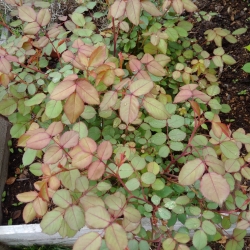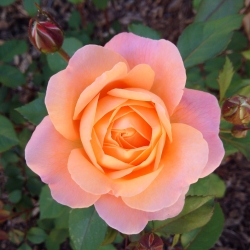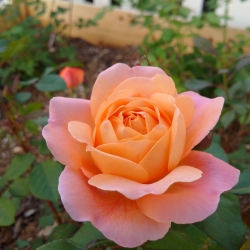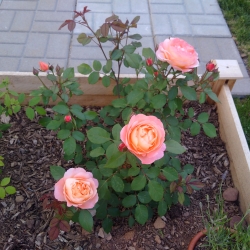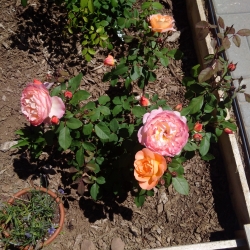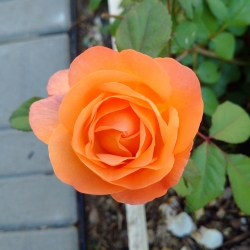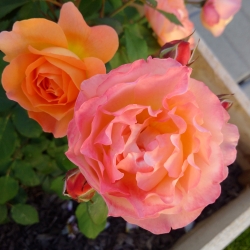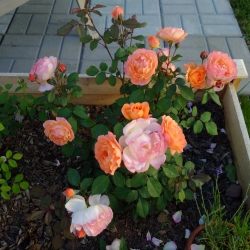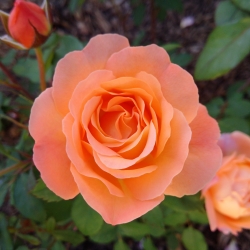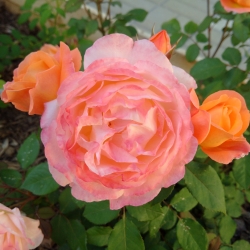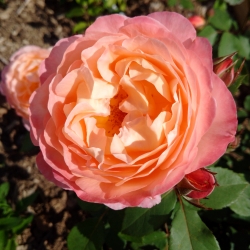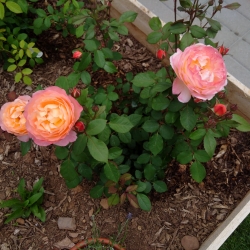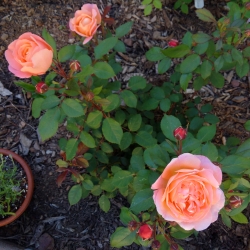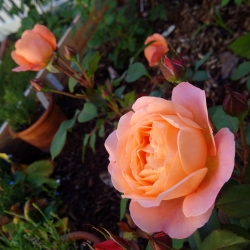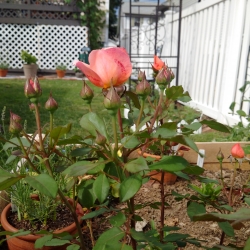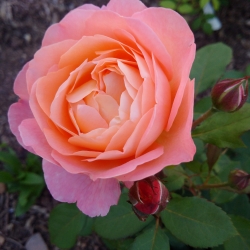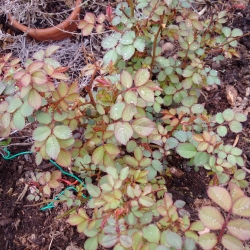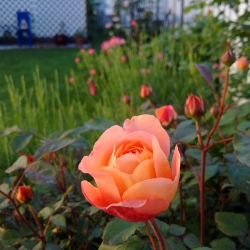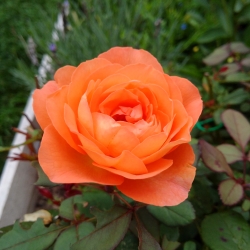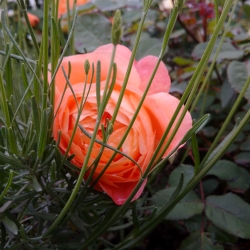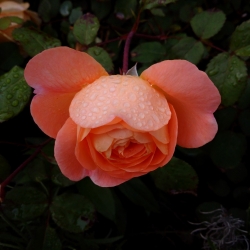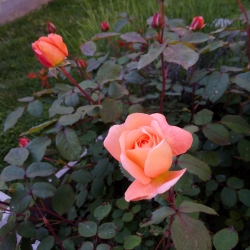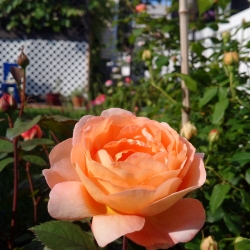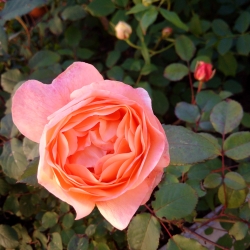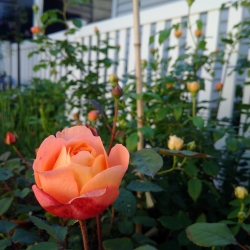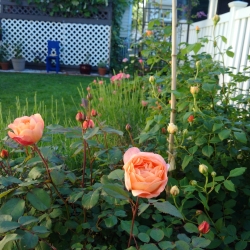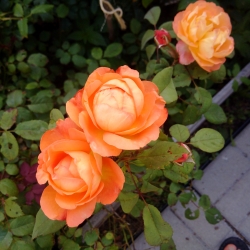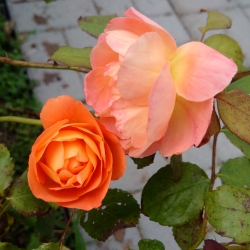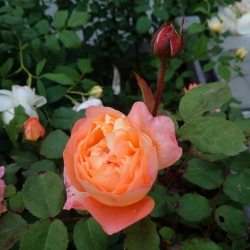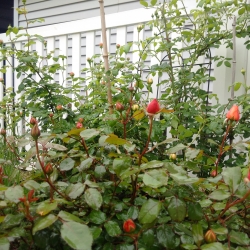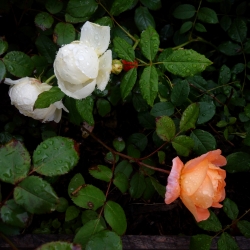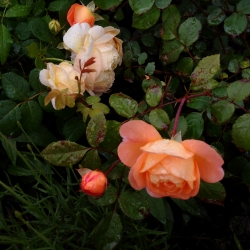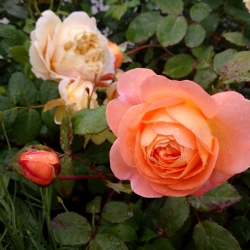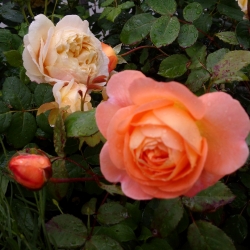With its wavy, electric tangerine blooms gradually fading to pink, few shrubs, and indeed few plants of any kind, put on as stunning a show as Lady Emma Hamilton. You will note in many of my photos, its blooms have a luminescence that almost makes them appear Photoshopped. They have not been edited, nor are there any photos in which a flash was used. The color is simply so intense that blooms appear to glow — even when viewed from across the yard.
This is an unusually beautiful plant from the moment it leafs out in spring, with striking, tri-colored (green, bronze and purple) foliage that looks exotic even before even approaching its first bloom cycle. On top of this, it brings one the most intense scents I’ve experienced from anything in the David Austin range — evoking a thick, sugary maraschino cherry syrup, poured over stewed pears.
There is, of course, a dark side: Lady Emma Hamilton is a freakishly effective blackspot magnet. I’ve never seen a plant so disfigured by this fungus. All that brassy foliage that so stuns in May will, with 100% certainty (at least in my humid New Jersey climate), descend into a gruesome, pockmarked mess by the time the first bloom cycle has completed in July. From that point forward, the goal is not so much to encourage more blooms as it is to desperately help prevent the once beautiful plant from being completely defoliated by the fungus. The battle cannot fully be won, but it can yield valuable experience that applies surprisingly well to other types of plants, including tomatoes.
Pros:
- Strong bloom performance
- Stunning and very unique scent
- Every bloom and every leaf is gorgeous…
Cons:
- Appears to bloom itself to exhaustion
- Prone to the most gruesome blackspot I’ve ever seen on a plant.
- Also prone to rust

